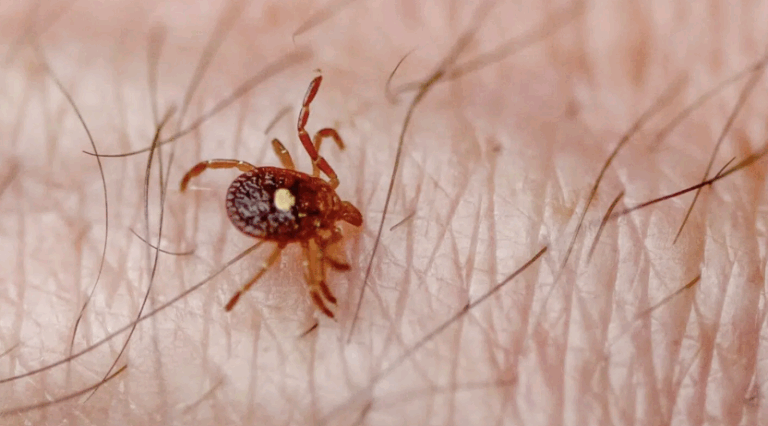A few weeks ago, while mowing the lawn, I felt a strange sensation on my ankle.
At first, I dismissed it as just another mosquito bite, nothing unusual.
But when I looked closer, I realized it was far worse—a small black dot clinging to me.
It was a lone star tick, easy to identify by the distinct white marking on its back.
Ticks are not like mosquitoes or bees; they pose a much greater threat.
The lone star tick is especially concerning because of its aggressive behavior.
Rather than waiting for a host to pass by, it actively hunts in grassy or wooded areas.
Its presence makes even familiar yards or trails a potential risk.
If you ever find a tick attached to your skin, the most important rule is not to panic.
Grab a pair of fine-tipped tweezers and secure the tick as close to the skin as possible.
Pull it out slowly and steadily, avoiding twisting, jerking, or crushing the body.
Once removed, clean the bite with rubbing alcohol or soap and water.
It’s also wise to save the tick in a sealed container, noting the date and bite location.
This step can be critical if you develop symptoms later and need medical guidance.
Doctors can sometimes identify diseases carried by ticks if the insect is preserved.
Preparation ensures nothing is overlooked if complications arise.
After a bite, watch for any changes in your health over the next few weeks.
Warning signs may include unusual rashes, fever, fatigue, or muscle aches.
These symptoms can signal infections such as Lyme disease or ehrlichiosis.
Immediate medical attention is crucial if they appear.
Prevention is equally important and often the safest approach.
When outdoors, wear long sleeves, tuck pants into socks, and apply insect repellent.
Ticks cling to clothing before reaching the skin, so protective barriers make a difference.
Checking yourself and your pets after every outing reduces the risk dramatically.
Your yard can also play a role in reducing tick encounters.
Keep grass trimmed short, remove leaf litter, and clear away tall weeds or brush.
By maintaining a tidy outdoor space, you make the environment less inviting to ticks.
Simple changes in landscaping can protect you and your family.
Though tiny, ticks carry dangers far greater than their size suggests.
Awareness, quick action, and proper prevention turn fear into preparedness.
A single bite should never be ignored, but it doesn’t need to end in disaster.
Knowledge is the best shield against these persistent little hunters.
The lesson is clear: take ticks seriously, even in your own backyard.
Recognize their risks, respond correctly if bitten, and practice prevention every day.
By staying alert and informed, you can enjoy the outdoors with confidence.
Preparedness ensures both safety and peace of mind in every season.
